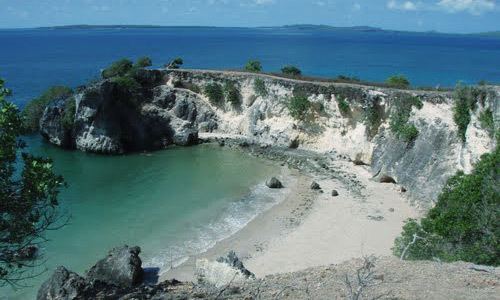 | ||
Explore rote island ntt indonesia
Rote Island (Indonesian: Pulau Rote, also spelled Roti) is an island of Indonesia, part of the East Nusa Tenggara province of the Lesser Sunda Islands. According to legend, this island got its name accidentally when a lost Portuguese sailor arrived and asked a farmer where he was. The surprised farmer, who could not speak Portuguese, introduced himself, "Rote".
Contents
- Explore rote island ntt indonesia
- Map of Rote island Rote Ndao Regency East Nusa Tenggara Indonesia
- Scuba diving rote island indonesia
- Geography
- Economy
- Tourist attractions
- Trivia
- References
Map of Rote island, Rote Ndao Regency, East Nusa Tenggara, Indonesia
Scuba diving rote island indonesia
Geography
Rote lies 500 km (311 mi) northwest of the Australian coast and 170 km (106 mi) north of the Ashmore and Cartier Islands. The island is situated to the southwest of the larger island of Timor. To the north is the Savu Sea, and to the south is the Timor Sea. To the west is Savu and Sumba. The uninhabited Ndana island, just south of Rote, with an area of 14 km2 (5 sq mi), is the southernmost island of Indonesia. Along with some other nearby small islands, such as Ndao island, it forms the kabupaten (regency) of Rote Ndao Regency, which in 2010 decennial census recorded a population of 119,711. Rote island has an area of 1,200 km2 (463 sq mi).
The main town, Ba'a, is located on the northern side of the island. Rote has a good surf area in the south around the village of Nemberala. There is a daily ferry to the island from Kupang, the provincial capital on West Timor, which provides transport for local passengers and goods as well as tourists. The trip between Kupang and Ba'a takes around two hours.
Wings Air Operates daily flights between Rote and Kupang. Flight time is about 30 minutes.
Rote consists of rolling hills, terraced plantations, acacia palm, savanna and some forests.
Economy
The Rotinese depend, like the Savunese, on the lontar palm for basic survival but also as a supplement to their income from fishing and jewelry making.
Agriculture is the main form of employment. Fishing is also important, especially in the eastern village of Papela, which has led to disputes with Australia over the water between them.
Tourist attractions
Rote has many historical relics including fine antique Chinese porcelain, as well as ancient arts and traditions. Several prominent Indonesian figures were born in Rote. A popular music instrument, Sasando, is made of palm leaves.
In the eastern part of the island is a pond in Landu Village that has non-poisonous jellyfish. The pond also has a white sandy beach.
Trivia
The critically endangered Rote Island snake-necked turtle is endemic to Rote Island.
The US-born Australian scholar, Prof James J Fox, has written extensively about Rotinese culture.
